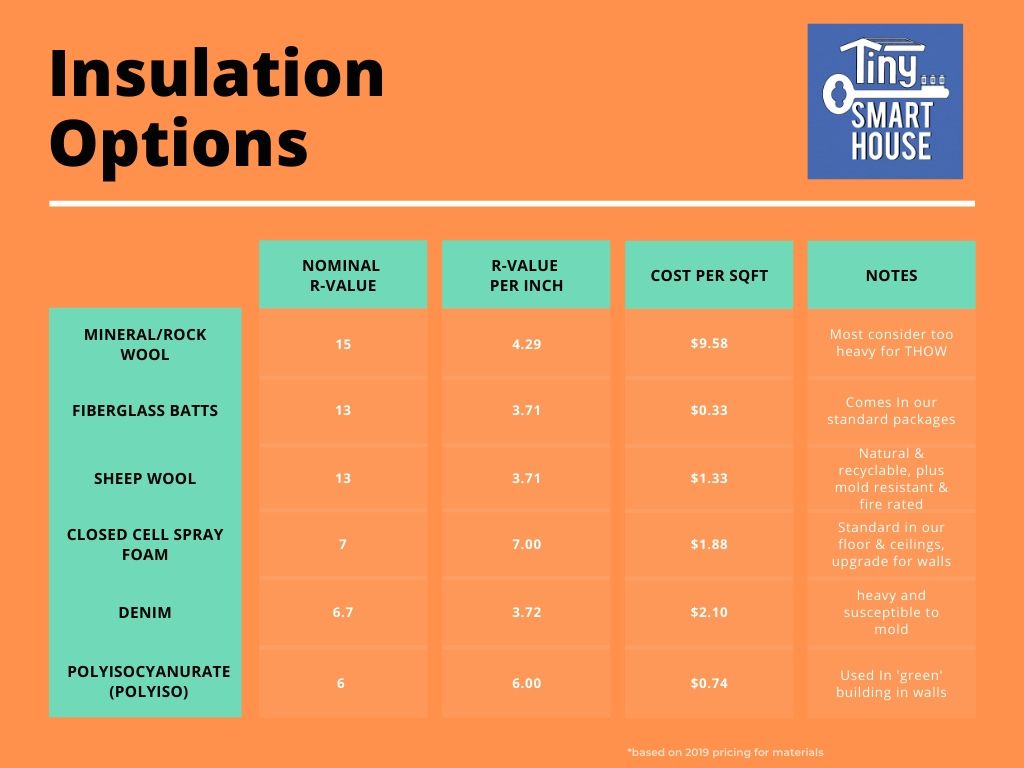
One of the best ways to make your tiny home sustainable, and comfortable to live in, is to insulate it properly. For the houses we build, we include as part of our standard packages a combination of spray foam insulation and fiberglass insulation. We also recommend adding a cost-efficient mini-split to heat/cool your home. In most climates, this works well.
Planning on regular travel with your movable home? Nathan, Tiny SMART House, CEO and Founder, suggests upgrading to spray foam as it weighs much less than fiberglass. An added benefit its rigidity to withstand the impact of travel.
The benefits of spray foam insulation abound:
- It creates a vapor lock so that condensation is not an issue
- Since it repels water, mold is not an issue
- A wide range of air pollutants are sealed out
- It reduces noise
- Critters don’t like to make a home in spray foam
- It improves R-value and reduces energy costs up to 30%
The Greenest Upgrade
Last winter, we toured the Havelock Wool factory in Reno, NV. It was exciting to learn about their insulation as it is all-natural (no chance of getting itchy as you do if you’re not careful with fiberglass!). For tiny houses on wheels, it offers a lighter weight and compares well efficiency and cost-wise to other insulation. We heard about a 44’ gooseneck being insulated before going to a customer in Alaska.
One benefit of sheep’s wool insulation is its breathability and moisture control properties. Sheep’s wool can absorb moisture in the air without compromising its insulation abilities. Natural keratin makes it naturally resistant to mold and mildew. Wool will not support a flame below 1100F. Havelock Wool conforms to Class A of the ASTM E84 test (the fire rating). Besides not having to worry about off-gassing, wool can even filter and improve your air quality.
The wool comes from sheep raised in the rain-fed, grass fields of New Zealand. Farmers care for their flocks, and are known as the best when it comes to sheering and cleaning practices. If you so choose, you could recycle or compost your wool insulation – a benefit none of the other types offer!
Want to learn more? Check out What Is The Best Insulation To Use In A Tiny House? for a deeper look at insulation options. Then contact us to discuss your insulation preferences for your Tiny SMART House build!
Guest blog and illustration by Stacey Newman Weldon. When she isn’t busy helping people create their own tiny custom homes, you can find her inspiring others to discovering their sense of fun at Adventure Wednesdays